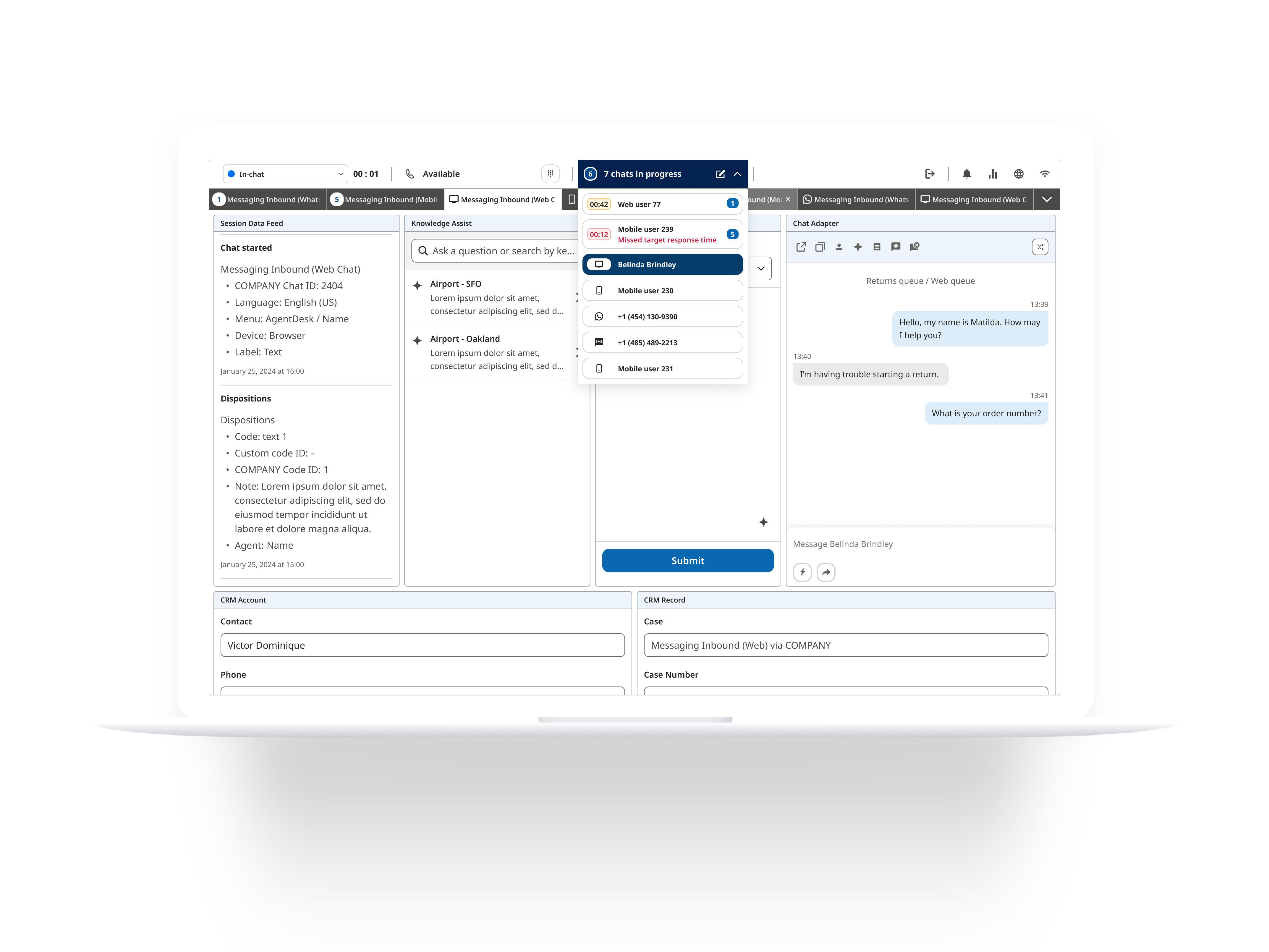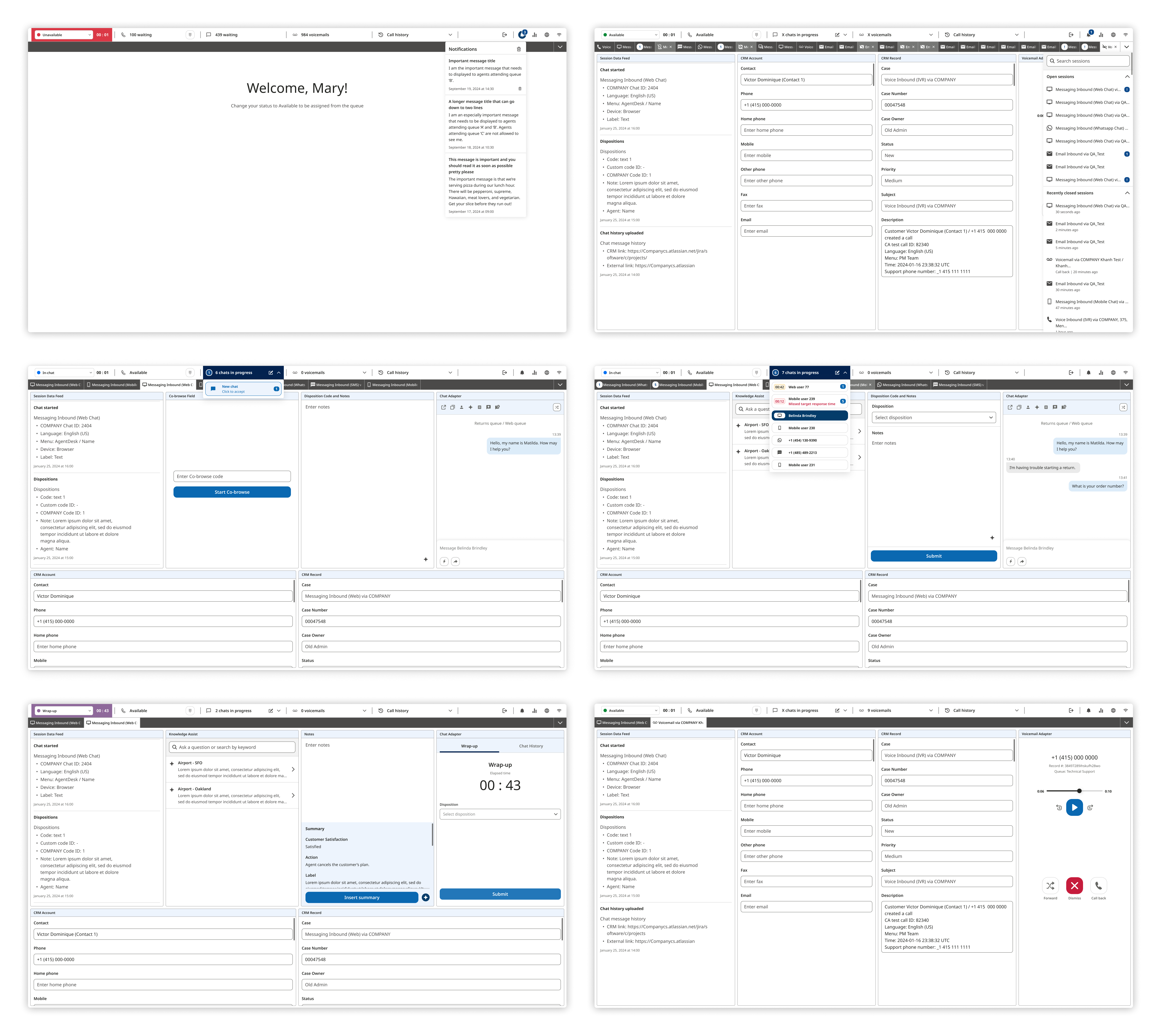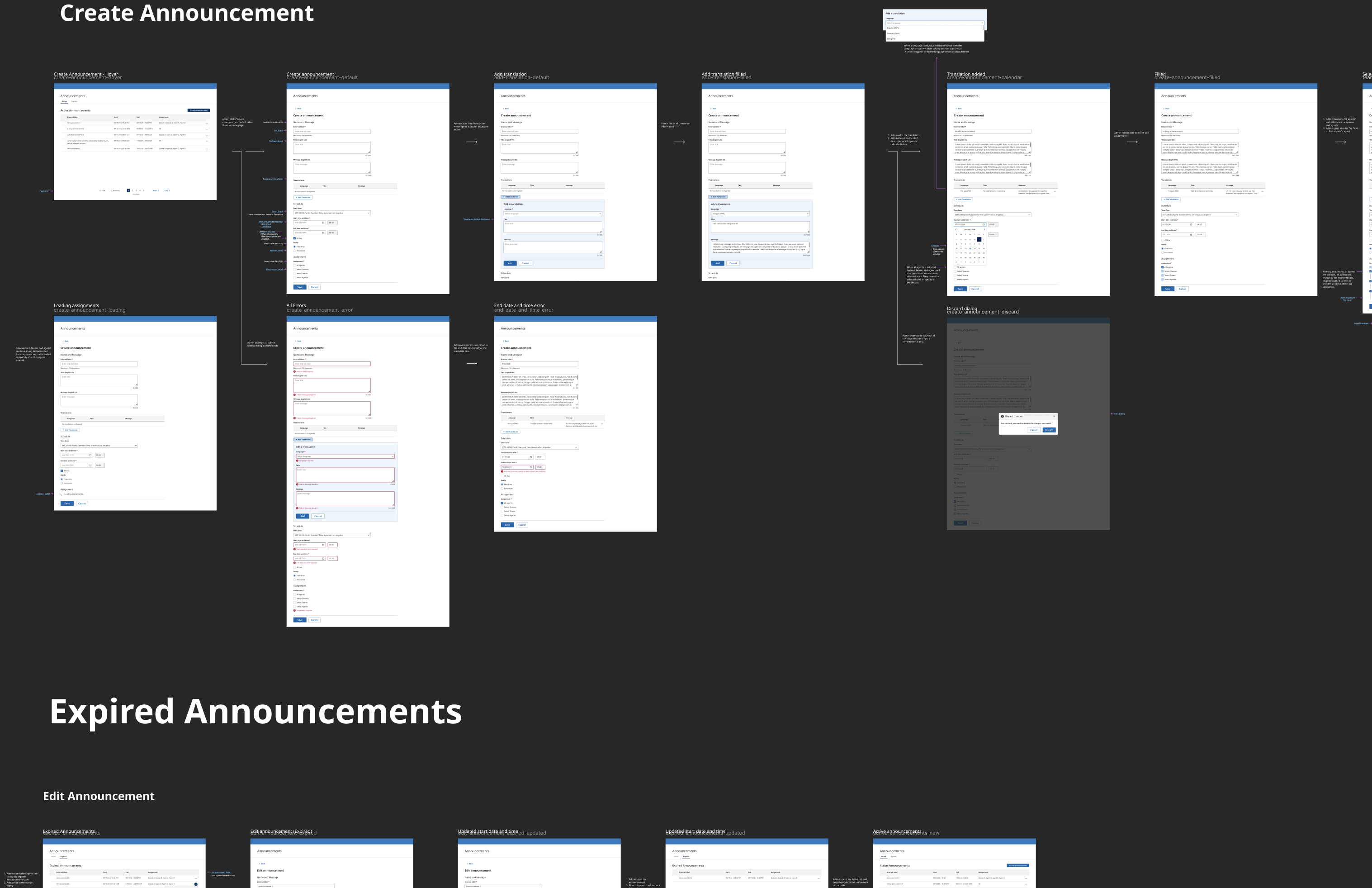The company set out to build an omnichannel support platform that unified Call/Voice, Chat Messaging, Voicemail, and Email into a single application. The goal was to consolidate communication tools, customer interaction history, and AI-powered capabilities into a holistic agent view, enabling seamless and efficient support across all channels.
A core feature of the platform was layout customization at the team or queue level. This empowered administrators to tailor the agent experience by selecting specific widgets and rearranging interface components to match their team’s unique workflows. As a result, we had to ensure that all widgets and panels were fully responsive and adaptable while also defining clear limitations to maintain usability and design consistency across different configurations.
I collaborated on this project with the UI Director for the initial phase of the project. We separated to focus on a channel each. I led the design on the Chat and Voicemail channels. I also led future feature additions to the Desktop App.

This initiative directly addressed a major pain point for agents: the constant need to switch between multiple disconnected applications to access information and tools. That fragmentation led to inefficiencies, slower response times, and ultimately, reduced customer satisfaction. The core UX challenge was to consolidate communication channels in a way that streamlined workflows without adding complexity or overwhelming the user.
To solve this, I focused on designing comprehensive user flows and introduced a session tab bar that allowed agents to seamlessly navigate between active conversations with multiple end consumers. I was responsible for integrating both the Chat and Voicemail channels into the desktop application, ensuring they functioned cohesively within the broader system. Additionally, I designed the experience for handling multiple concurrent interactions, such as managing a phone call and a chat session within a single session, enabling agents to stay focused and responsive without losing context.

To address the fragmented communication between admins, supervisors, and agents, which had previously relied on email or third-party messaging apps, a Product Manager and I designed and implemented a real-time announcement feature directly within our desktop application. These external communication methods were often unreliable, resulting in missed or overlooked messages and operational inefficiencies.
The new system allowed admins to instantly broadcast important updates, alerts, and critical information to agents, ensuring timely awareness and improved coordination across teams. On the agent side, I designed an in-app experience that enabled agents to receive, view, and manage announcements in real time, ensuring visibility without completely disrupting their workflow. For admins, I created a back-end interface to compose, schedule, and manage announcements, with features such as setting visibility duration, message type, and targeting specific recipients.
To support long-term efficiency, I also introduced a comprehensive archival system that stored expired announcements for future reuse. I designed the end-to-end flow to ensure a seamless user journey, from announcement creation to delivery and historical access, enabling complete lifecycle management of internal communications.
This feature significantly improved real-time awareness for agents, reduced communication gaps, and enhanced operational alignment across the platform.

